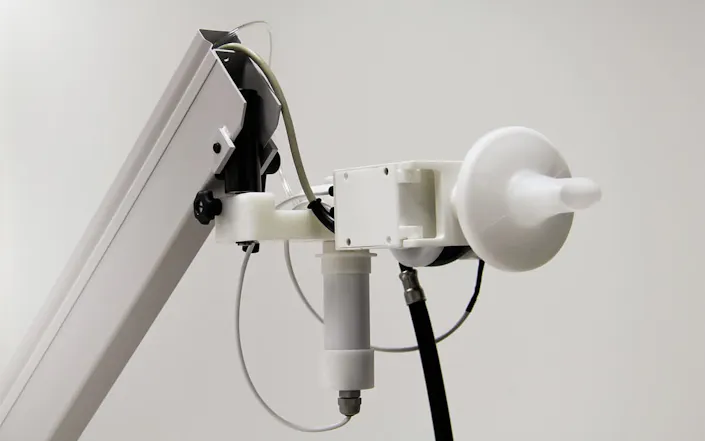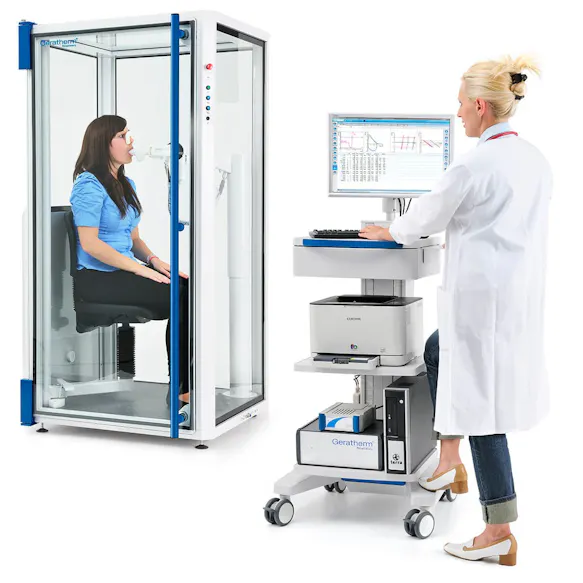Health Care in One Breath
„Please strip to the waist.“ Medical examinations still frequently begin with this sentence. Still. This sentence could very soon be: „Please breathe out strongly.“ For research in the field of respiratory gas measurement systems are making considerable progress. The aim is clear: To make the diagnosis of illnesses easier and painless.

Several pricks in the fingertip or taking a blood sample several times from the vein – the diagnosis of diabetes is mostly accompanied nowadays with the repeated measurement of sugar levels in the blood. But you can smell diabetes. A slightly sweet fruity odour in the breath indicates the presence of this metabolic disease.
Biomarkers as indicators of diseases
Meanwhile this admittedly very vague examination method can be put on a sound footing. This is because a person’s breath resembles a gaseous profile of their state of health. This contains several hundred volatile organic compounds. Many of these compounds (as so-called biomarkers) reliably indicate diseases. The biomarker for diabetes is, for example, acetone, which is a fat reduction product.
Würzburg-Schweinfurt University for Applied Sciences as well as the Bavarian company Geratherm Respiratory GmbH are exploring such biomarkers. Both of these have developed the prototype of a respiratory gas measurement system for non-invasive diagnosis in a joint project assisted by Professor Walter Kullmann. This enables to detect lung diseases as well as metabolic and cancer diseases.
The examination requires the patient to breathe strongly into the mouthpiece of the measurement system. The respiratory gases enter a spherical measurement chamber gilded with gold on the inside. Thermal infrared radiation strikes this chamber. Pyroelectric detectors with special filters measure the transmission of the gas mixture. The measurement results serve as a basis for the medical diagnosis. The biomarker acetone thus makes it possible to determine with a sensitivity of 3 to 13 parts per trillion per digit.
This outstanding sensitivity creates the prerequisite for the early detection and monitoring of diabetes mellitus. And without a single prick.

Use of Pyroelectric Detectors in Practice
One advantage of pyroelectric detectors is the versatility of their applications. Detecting and analyzing gases and gas mixtures, investigating the material composition of organic and inorganic compounds, monitoring flames – all this is of great importance in a wide range of industries. Selected examples will help you to get to know some of the possible applications and, at best, to gain valuable ideas for solving your own measurement and testing tasks.